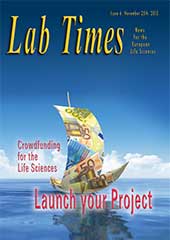 Benevolent readers: As we’ve noted many times, since August of 2010 when we launched Retraction Watch, you’ve showed us plenty of love, for which we are ever grateful. Your encouragement, story tips, and critiques are what make the site what it is. It’s great to know that we are providing you with a valuable source of information that has helped focus public attention on scientific misconduct and the process of self-correction.
Benevolent readers: As we’ve noted many times, since August of 2010 when we launched Retraction Watch, you’ve showed us plenty of love, for which we are ever grateful. Your encouragement, story tips, and critiques are what make the site what it is. It’s great to know that we are providing you with a valuable source of information that has helped focus public attention on scientific misconduct and the process of self-correction.
Now, on this Giving Tuesday, we’re hoping some of you will consider making tax-deductible charitable contributions to The Center For Scientific Integrity, the 501(c)3 parent organization of Retraction Watch. Please consider supporting our blog financially by becoming a paying subscriber at a modest level (or, if the spirit moves you, at an immodest level — we’ll take that, too!). Continue reading This Giving Tuesday, consider supporting Retraction Watch





